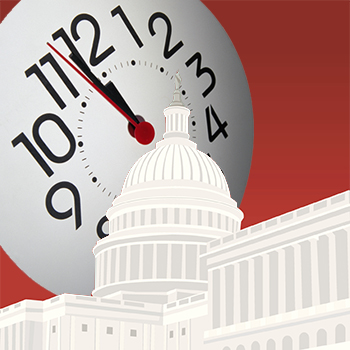What Do Recent Hours-of-Service Changes Mean for Transportation in 2015?

The Fiscal Year 2015 Appropriations bill, to be signed by President Obama this week, suspends certain HOS rules that went into effect on July 1, 2013.
You probably heard about the most recent talks about the importance of a spending bill passing in Congress to avoid a government shutdown.
You may have missed the rather surprising changes to the hours of service (HOS) regulations that were also on the docket.
What’s changed?
The Fiscal Year 2015 Appropriations bill, to be signed by President Obama this week, suspends certain HOS rules that went into effect on July 1, 2013.
Once signed by the President, the bill will become law and the restart rules from June 30, 2013, will apply immediately.
While on the road drive time has always remained the same - a maximum allowable time of 11 hours per day - two specific rules will be suspended until at least September 30, 2015. These changes now allow drivers to restart their clock more than once per week and use any consecutive 34-hour time period as a 34-hour restart. The requirement to include two 1:00-5:00 a.m. time periods is eliminated.
In a nutshell
- Two HOS regulations have been suspended until at least September 30, 2015.
- Maximum on the road drive time is still 11 hours per day.
- Drivers can now restart their clocks more than once per week.
- Drivers can use any consecutive 34-hour time period as a 34-hour restart; it does not need to include two 1:00-5:00 a.m. periods.
- While the rules are suspended, two studies will be conducted determining the net cost and safety benefits of the regulations.
Lifting the suspension
The suspension is based on the need for two studies to be completed by DOT and the DOT Inspector General regarding the net cost and safety benefits of the regulations.
According to the new law, the suspension will not be lifted until both studies are complete and September 30, 2015, has passed. Even if both reports are completed earlier than anticipated, the regulations cannot be reinstated until after September 30.
The new law’s language is not clear about the outcomes of the two reports. As it currently reads, the re-introduction of the July 1, 2013, rules is tied to the issuance of the two reports, not necessarily the conclusions of those reports. Look for confusion later this summer about whether the restart provisions will be reinstated or not.
A little background
While this change may seem sudden, the data and study used to support the July 1, 2013, changes has been challenged significantly by numerous trucking related groups, most significantly by the American Transportation Research Institute (ATRI). Senator Collins from Maine led the successful effort that included the language in the Appropriations Committee, but the bill stalled before the midterm elections.
As part of the negotiations for the final package to fund the federal government for 2015, Senator Collins was able to maintain the language as one of the many policy riders that were attached.
How will this impact your business?
As with any new change - but especially due to the speed of this change - you can expect there to be confusion about the suspended regulations, which could impact the timeliness of your freight deliveries. Adjusting to the changes will vary by carrier, due in large part to how they record HOS and how quickly electronic logging device (ELD) vendors can update their software.
Trucking remains one of the most competitive industries in the U.S. When initially implemented, the July 1, 2013, changes were only one factor in a diverse marketplace. Procuring truckload fright remains the same and an annual bid with loyal, stable carriers remains a best practice as outlined in Stale Rates Research: Benefits of Frequent Transportation Bids.
No one knows where market rates will go and there are consequences to offering rates both above and below market. One likely outcome for those shippers who maintain routing guides is greater route guide acceptance, which is always a benefit in reducing overall costs.
Check back again for more information on the new law as it goes into effect. Due to the open-ended language of the law, it’s likely that more changes will occur before things settle down into a steady rhythm again. Still confused about what this means for you, your freight, or your business? Please leave your comments and questions below.
Related: Hours-of-Service (HOS) Study Indicates Substantial Losses in Trucking Productivity

Article Topics
C.H. Robinson News & Resources
Q&A: Mike Burkhart on the Recent Nearshoring Push Into Mexico Q&A: Mike Burkhart, VP of Mexico, C.H. Robinson C.H. Robinson introduces new touchless appointments technology offering C.H. Robinson President & CEO Bozeman provides overview of key logistics trends and themes at SMC3 JumpStart 2024 C.H. Robinson touts its progress on eBOL adoption by LTL carriers and shippers Retailers Pivot Supply Chain Strategy, Seek Red Sea Alternatives C.H. Robinson announces executive hire to run new Program Management Office More C.H. RobinsonLatest in Transportation
Baltimore Bridge Collapse: Impact on Freight Navigating Amazon Logistics’ Growth Shakes Up Shipping Industry in 2023 Nissan Channels Tesla With Its Latest Manufacturing Process Why are Diesel Prices Climbing Back Over $4 a Gallon? Luxury Car Brands in Limbo After Chinese Company Violates Labor Laws The Three Biggest Challenges Facing Shippers and Carriers in 2024 Supply Chain Stability Index: “Tremendous Improvement” in 2023 More Transportation











